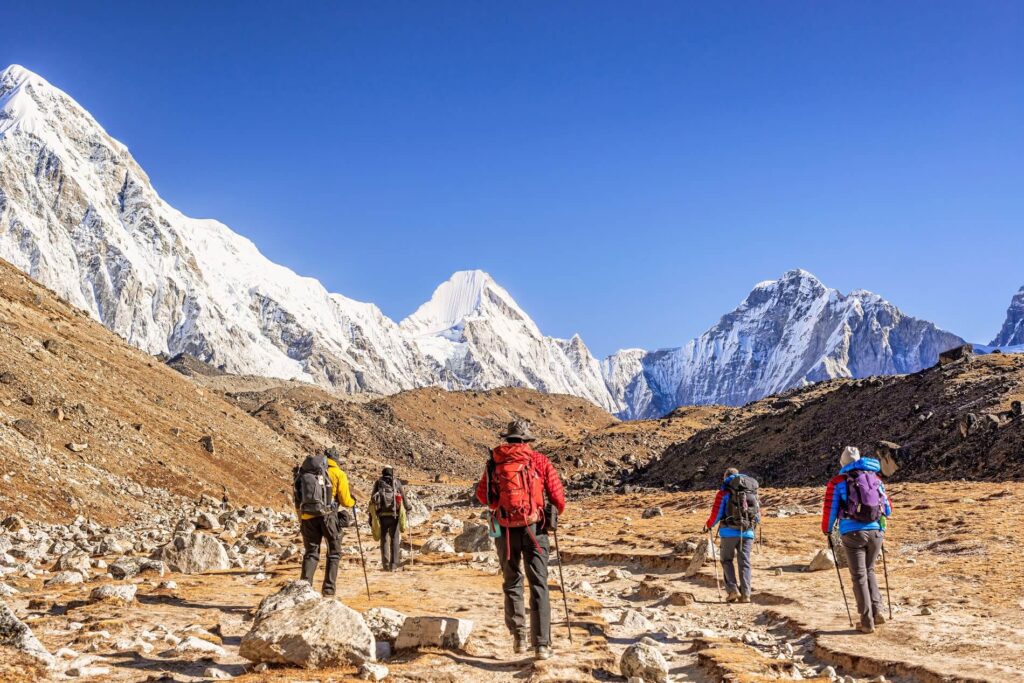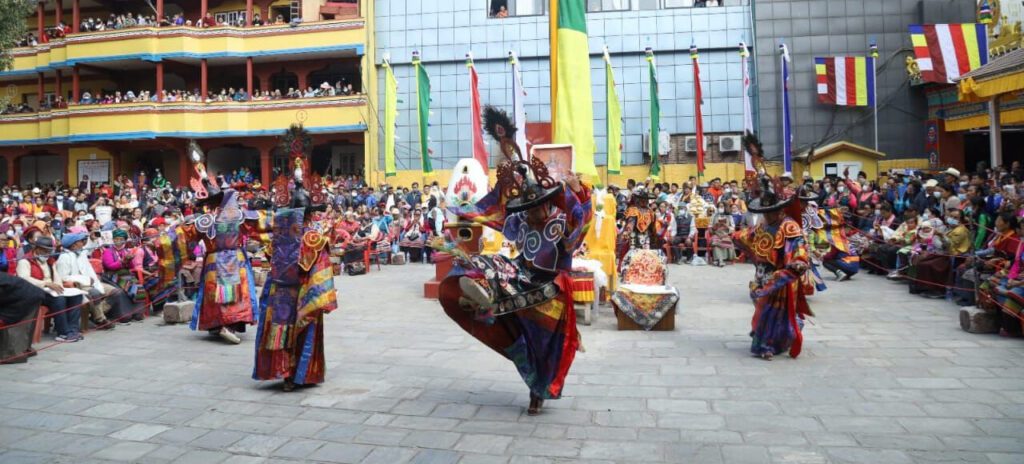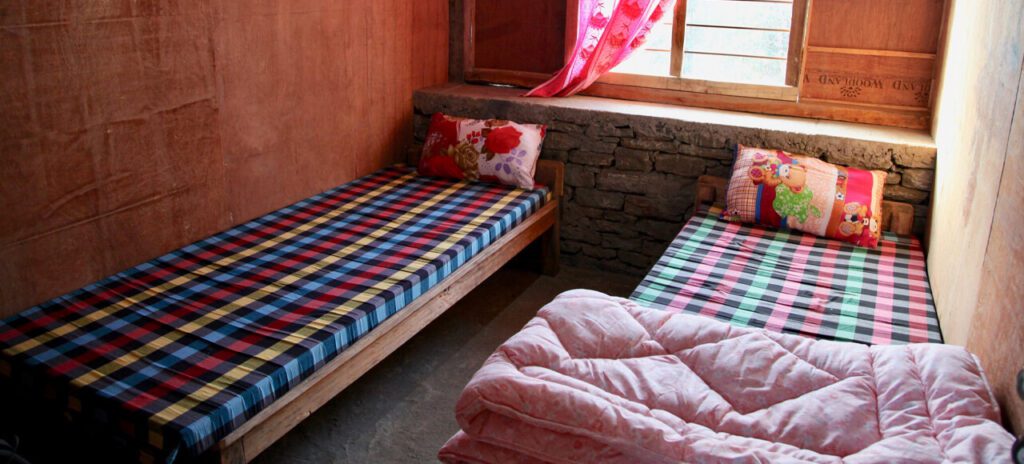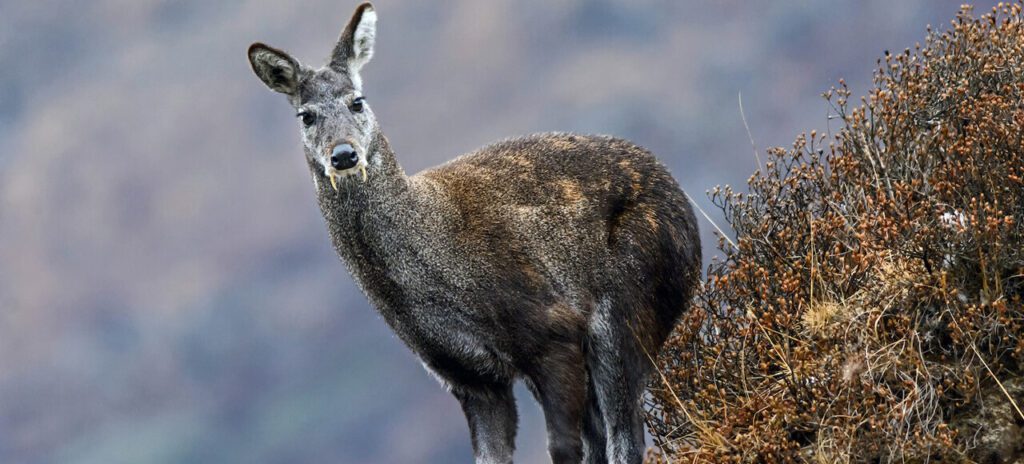Explore the harsh yet captivating weather conditions, crowds, festivals, and merits of trekking to Everest Base Camp in January. Discover the beauty of the snowy Himalayas and cultural celebrations of the Sherpa, Gurung, and Tibetan communities. From the peaceful and less crowded trails to the breathtaking vistas of clear skies, read on to uncover the joys and challenges of visiting Everest Base Camp during the off-season.
Weather
The weather at Everest Base Camp in January is generally very cold, with temperatures ranging from -10°C to -20°C (14°F to -4°F) during the day and dropping to -30°C (-22°F) or lower at night.
Situated at an altitude of around 5,364 meters (17,598 feet), Everest Base Camp is located in the Himalayas and is positioned on the Khumbu Glacier, which is known to be one of the largest glaciers in the world. Due to its elevated location and position, the weather conditions at Everest Base Camp can be harsh and volatile, particularly during the winter season.

January is known for being a dry month with very little precipitation, which means that it has a low amount of rainfall, snow, or any other form of moisture. The dry air in the atmosphere can cause skin and respiratory problems for those who are not used to such conditions.
However, despite being a dry month, there may still be occasional instances of snowfall or light snow flurries. These events can create beautiful scenery, but they can also create some challenges for those who are traveling in the area. It’s important to be prepared for such weather conditions by wearing appropriate clothing and gear, as well as by being aware of any potential hazards that may arise due to the snow or ice.
The harsh environment at Everest Base Camp, especially during the winter season, can make the conditions quite challenging to navigate. The bitterly cold temperatures, combined with the dry air, can make it difficult to stay warm and comfortable. Therefore, it’s crucial to bring the appropriate gear and clothing to ensure that you’re adequately prepared for these conditions.
Crowds
January is typically considered the off-season for trekking in Everest Base Camp due to the harsh winter weather conditions, and therefore, the crowds are generally smaller compared to the peak climbing seasons of April and May. However, there may still be a significant number of trekkers and climbers at the base camp during January as it is still possible to undertake trekking and mountaineering activities in the region during this time.

The number of people at Everest Base Camp during January can vary depending on a range of factors such as weather conditions, trekking routes, and the popularity of the area. As it is generally less crowded than during peak season months, it can be advantageous for those seeking a more peaceful and less crowded experience. Additionally, many trekking agencies offer discounted rates for trips during the off-season, making it a more affordable time to visit.
Also Check: An Overview of Everest Base Camp
However, during the winter months from December to February, the harsh weather conditions make it difficult to attempt a climb to the summit, and as a result, the number of people visiting the base camp decreases significantly. Even so, there might still be a significant number of hikers and climbers at the base camp in January. Numerous people travel to the area for hiking and sightseeing, and some might even still try the climb to the summit under more difficult circumstances.
Festival
It is one of the most popular trekking destinations in the world and attracts thousands of visitors every year. The month of January is considered the peak winter season in the Everest region, and despite the harsh weather conditions, there are a few festivals celebrated in the area. Let’s explore some of them.
- Gyalpo Lhosar: Lhosar is a celebration of the Sherpa community’s New Year, which takes place in either January or February based on the lunar calendar. The Sherpa people, who are the indigenous inhabitants of the Everest region, adorn their residences with vibrant prayer flags and make classic delicacies such as Khapse, a deep-fried pastry. Additionally, they showcase their cultural clothing and perform traditional dances to commemorate the occasion.

- Tamu Lhosar: Celebrated in January, Tamu Lhosar marks the New Year festival of the Gurung community residing in the Everest region, and it is observed with immense zeal. During this event, the Gurung people showcase their cultural heritage by performing traditional dances while dressed in their ethnic attire. Additionally, they prepare and enjoy traditional delicacies such as Sel Roti, a form of rice bread.
- Losar: Tibetans who reside in the Everest area celebrate the New Year with Losar. Depending on the lunar calendar, it occurs in either January or February. The Tibetans perform traditional dances, wear cultural attire, and decorate their homes with vibrant prayer flags during this holiday. Additionally, they cook traditional meals like dumplings.
Merits and Demerits of Everest Base Camp trek during January
Merits
Trekking to Everest Base Camp in January has its own merits and challenges. Here are some potential merits of the trek during this time:
Fewer crowds: January is typically considered the off-season for trekking to Everest Base Camp. This is because January is a winter month, and the weather conditions in the region can be challenging, with low temperatures, strong winds, and occasional snowfall. As a result, the number of trekkers visiting the region during this month is significantly lower than during peak trekking seasons such as spring and autumn. The lower number of trekkers on the trail during January means that the trekking experience is quieter and more peaceful compared to the peak seasons. There are fewer people on the trail, which makes it easier to enjoy the stunning natural scenery, connect with nature, and appreciate the solitude of the wilderness. Moreover, since there are fewer trekkers, the tea houses and other accommodation options along the trail are less crowded, providing a more comfortable and relaxed stay.
Also Read: Everest Base Camp Route – From Tenzing Hillary route to Heli ride
Clear skies: With the absence of clouds, visitors and locals alike can take in the scenic beauty of the mountains, enjoying the stunning landscapes and vistas that they offer. Whether it’s snow-capped peaks or lush green valleys, the clear skies in January provide a perfect opportunity for sightseeing and outdoor activities.
Snow-covered scenery: The Everest region is stunning during the winter season, with snow-covered landscapes adding to the beauty of the trek.
Cheaper prices: As January is the off-season, prices for accommodations, flights, and permits are usually lower than during peak trekking seasons.
Cultural experience: As mentioned earlier, January is the time of some traditional Sherpa and Tibetan festivals in the region, which could add a unique cultural dimension to your trek.
Demerits
Here are some more details on the potential challenges of trekking to Everest Base Camp in January:
Colder temperatures: January is considered the coldest month of the year in the Everest region, with temperatures dropping below freezing at night. Trekkers need to be prepared for cold weather conditions and ensure they have proper cold-weather gear, such as warm jackets, gloves, hats, and sleeping bags.
Snow and ice on the trail: During January, there is a higher chance of encountering snow and ice on the trail, especially at higher elevations. This can make the trail slippery and challenging, especially for those who are not used to trekking in winter conditions. Trekkers need to have appropriate footwear with good grip and consider using trekking poles to aid in stability.
Limited tea houses and services: Due to the off-season, many tea houses and lodges along the trail may be closed or have limited services, such as limited food options and no hot showers. Trekkers need to be prepared to carry their own food and water and have appropriate camping equipment if necessary.

The Everest Base Camp is located in Nepal’s Himalayan region, which is renowned for its diverse and unique wildlife. However, many animals in the area migrate to lower elevations or hibernate during the winter months, making wildlife sightings less likely. Furthermore, due to the extremely cold temps and heavy snowfall in January, spotting animals may be challenging.
Plants and Animals
Plants
The weather in January can be exceedingly chilly, snowy, and windy. Because of this, there aren’t many plants that can endure such harsh circumstances. During the month of January, the following vegetation can be found close to Everest Base Camp:
Mosses and lichens: They are among the hardiest plants, able to endure extremely cold temperatures. They grow on rocks and in the soil.
Alpine grasses: The Everest area is home to several species of alpine grasses, including the Tibetan Needlegrass and the Himalayan Bluegrass.

The dwarf rhododendron and the juniper are two examples of shrubs that can endure a harsh environment.
Alpine flowers: Although there are not many blooming plants in January, some hardy alpine flowers can be found at this time of year, including the Himalayan Bellflower, Sikkim Primula, and Gentiana.
Everest Base Camp is located in the Khumbu region of Nepal and is primarily a site for mountaineering expeditions. While there are not many animals that are commonly seen in the area, there are a few species that can be spotted. In January, which is winter in Nepal, the number of animals that can be seen is generally lower than during other times of the year due to harsh weather conditions.
Animals
The Everest Base Camp is located in Nepal’s Himalayan region, which is renowned for its diverse and unique wildlife. However, many animals in the area migrate to lower elevations or hibernate during the winter months, making wildlife sightings less likely. Furthermore, due to the extremely cold temps and heavy snowfall in January, spotting animals may be challenging.
Listed below are a few creatures that might be seen in Everest Base Camp in January:
Large Tahr species are indigenous to the Himalayas. They are frequently spotted grazing on the hills near Everest Base Camp and are distinguished by their shaggy coats and curved horns.
The snow leopard, a rare and elusive big cat, calls the Himalayan highlands, including the vicinity around Everest Base Camp, it’s home. While sightings of this majestic animal are infrequent, you may be fortunate enough to catch a glimpse of one if luck is on your side.

Another species is the musk deer, which is distinguished by its unique scent glands that are used to create a priceless perfume ingredient. They occasionally appear in the woods. The Himalayas are home to the colorful Monal or “Himalayan bird.” The blue-green feathers on the males’ backs and the bright scarlet feathers on their breasts make for striking plumage.
The golden eagle is a bird of prey that inhabits mountainous areas all over the globe. They occasionally fly over the hills close to Everest Base Camp.
The temperature of Everest Base Camp on January
Depending on the particular year and weather, the typical January temperature at Everest Base Camp can differ significantly. Although it can get as cold as -27°C (-17°F) at night, the average weather at Everest Base Camp in January is rough -17°C (1°F) during the day. It is crucial to remember that these temperatures are only averages and that, based on the local weather, they may be considerably colder or warmer. High winds and snowfall can also have a significant effect on the temperature and weather at Everest Base Camp in January.
One of the world’s biggest glaciers, the Khumbu Glacier, is where the base camp is located. The weather at Everest Base Camp can be extremely abrasive and unpredictable due to the high height and location, particularly during the winter months.
Apart from having cold temperatures, Everest Base Camp is also subject to strong winds, snowfall, and other weather conditions that can make it even colder and harder to ascend. Visitors to Everest Base Camp in January need to be well-prepared for these harsh weather conditions and outfitted with the right gear in order to remain warm and safe.
Side trek beside Everest Base Camp
There are several other treks that you can partake in in the Everest region along with the Everest Base Camp trek. Some of them are:
Gokyo Lakes Trek: This hike takes you to the breathtaking Gokyo lakes, which are located at a height of over 15,000 feet. You’ll also be offered stunning views of Everest and other Himalayan peaks during your journey.

Everest Three Passes Trek: This challenging trek takes you over three high mountain passes – Renjo La, Cho La, and Kongma La – and offers some of the most spectacular views in the region.
Trek to Island Peak: This trek involves the climb of Island Peak, a well-liked peak for beginner mountaineers. It’s an exhausting trek that passes through stunning mountains and scenery.
Everest Base Camp with Gokyo Lakes and Cho La Pass: This trek combines the best of the Everest Base Camp trek and the Gokyo Lakes trek, and also takes you over the challenging Cho La Pass.
Mera Peak Trek: Mera Peak Trek is one of the most well-liked and difficult trekking paths in Nepal’s Everest region. Its summit is located at a height of 6,476 meters (21,246 feet). The journey kicks off with the flight from Kathmandu to Lukla which is then followed by a hike to the stunning Hinku Valley. Jaw-dropping views of the Himalayan Mountains, including Everest, Lhotse, Makalu, and Kanchenjunga, can be seen while traveling through traditional Sherpa communities.
Let our expert team at Asian Heritage Treks and Travel take care of everything — from guided tours to personalized packing tips and travel arrangements.
Plan My Everest Trip







